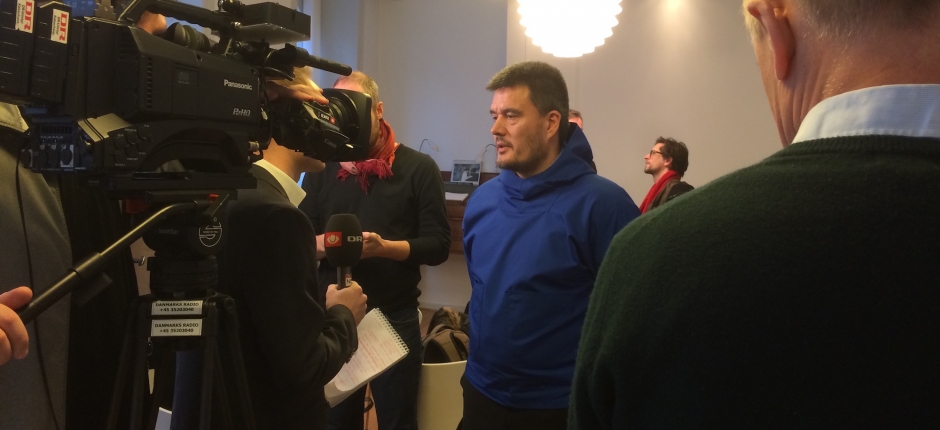Despite backdrop of independence, Greenland’s premier keeps focus on the present, not future

Unlike many in his profession, Kim Kielsen, Greenland’s premier, rarely seeks out the limelight. Full-blown interviews with the domestic press are few. Internationally, it is his foreign minister that is the face of the cabinet.
This is partly a reflection of Kielsen’s preference to speak about the present, rather than the future. When he does meet with foreign journalists, for example, most of the questions he fields focus, to his dissatisfaction, on the country’s future independence.
“But this is not a news item,” he told an audience of Danish and foreign journalists in Copenhagen Friday. “It is a goal that we have set since the beginning.”
The beginning, in in Greenland’s case, is 1979, and the introduction of Home Rule, which saw authority over local issues devolved from Copenhagen to Nuuk. Over time, Greenland has assumed more responsibility for its own affairs, and eventually this is expected to end with full independence.
As he has stated before, Kielsen expects a decision on the matter to be something for a future generation to decide. In the meantime, his government is focused on issues such as economy and education, which he believes must be in order first.
“We must improve the education level of the population in order to reach a state of independence,” he says. “Education provides freedom for the individual, and provides opportunities for personal development.”
Economically, he explains that Greenland’s plans for the future rest on four pillars: fishing, tourism, mining and education. So far, only fishing provides significant income, and that, Kielsen points out, fluctuates considerably.
Once all four pillars are in place, boom and bust cycles in individual industries will matter less. The process will take time, Kielsen admits, but he remains bullish: the tourism industry is posting annual growth rates of 6 percent, and plans to improve the country’s airport infrastructure should help it along further. A recent forecast by Visit Greenland, the national tourism board, suggests the number of visitors could double, to 90,000, by the middle of the next decade if the country plays its cards right.
When it comes to minerals, Kielsen describes his country as being “at the beginning of a process.” Low commodities prices in recent years derailed a number of projects, leaving Greenland without an operational mine at the moment. This, however, is likely to change in 2017 when at least two mines are expected to begin operations. More mines may open in 2018.
“It looks promising right now,” he says. “Prices are on the increase, and the interest in Greenland is also on the increase. Still, even though we have given permission to mine from several sites, we have not seen any ships transporting minerals yet.”
Like minerals, interest in oil has also cooled as the price has fallen. Greenland, like other Arctic countries, is believed to be sitting on considerable oil and gas reserves, and, for this reason, its current strategy, published in 2014, had expected that by the time it expired, in 2018, there would be activity in five exploration areas. Currently, all but one are dormant.
The most recent licensing round, for example, ended without a single firm submitting a bid. The Bureau of Minerals and Petroleum maintains that the lack of interest is a matter of cost, rather uncertainty about the country’s geology; if oil can be found in Greenlandic waters, extracting it would cost an estimated $90 per barrel, nearly double what it can be sold for today.
Kielsen’s mining minister suggested last month that when the next five-year natural-resources strategy is published, in 2019, oil will be there, though he could not guarantee to what extent. This is something that Kielsen reiterated Friday.
“Prices have been low, and therefore interest has been low the past two years, but we are hopeful there will be interest in the future,” he says.